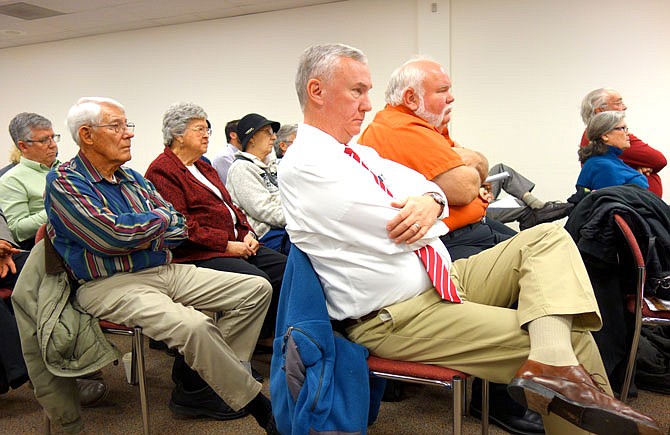JEFFERSON CITY - The Missouri Air Conservation Commission is questioning whether to expand the so-called odor rule to cover more categories of confined animal feeding operations.
During the Thursday MACC public meeting, the commission moved to take 90 days to do "due dilligence" and consider the public-submitted petitions requesting the rule change.
The odor rule currently requires Class 1A CAFOs - the largest class - to implement odor control plans. Petitions submitted by a law firm on behalf of Callaway-based Friends of Responsible Agriculture and other groups requested the rule be expanded to cover Class IB, IC and II CAFOs as well. Petitioners also requested requirements for documenting emissions and imposing emission standards for ammonia, hydrogen sulfide and particulate matter.
Kyra Moore, air pollution control program director for the Missouri Department of Natural Resources, responded Nov. 22 by declining to amend the rule. However, environmental lawyer Stephen Jeffery argued as the body being petitioned, the MACC should be required to respond, rather than the DNR.
The petitions were placed on Thursday's meeting agenda.
Commissioners' discussion was limited to motioning to extend the consideration period.
Following the motion, many members of the public - on both sides of the issue - shared impassioned comments.
Robert Brundage, a lawyer representing Callaway Farrowing, LLC (a CAFO developer that's been seeking to establish a farm near Kingdom City since 2014), questioned the motives of FORAG and the other groups. He claimed the petitions may be a part of their strategy to block his client's project.
Darrick Steen, a former DNR engineer who now works on behalf of Missouri Soybean and Missouri Corn, also supported the DNR's decision to reject the petitions.
"Our communities don't need more regulations, they need jobs, and this petition is a job-killer," he said.
John Rice is a fourth-generation family farmer from Grundy County.
"We raise soybeans, corn, cattle, grandchildren and some gardens," he said.
He spoke in support of expanding the odor rule, citing the health risks that emissions from unregulated CAFOs may pose.
"As a farmer, I'm well aware that we don't need excessive regulations, but there are times when regulations are necessary," Rice said. "I think this is one of those times."
Callaway County residents and active FORAG members Jeff Jones, Margot McMillen and Shirley Kidwell also supported the odor rule expansion.
"I do live next to a CAFO," Jones said. "There's not a day that goes by that this community isn't affected."
Jonathan Garoutte is the administrator for the Missouri Department of Health and Senior Service's Environmental Public Health Section. He offered some scientific context for the dangers ammonia and hydrogen sulfide can pose.
"The science of odors is complicated," Garoutte said.
He said the human nose can detect odors at well below dangerous, toxic levels. However, even at lower levels, those odors can be noxious - causing temporary symptoms like nausea, stress and headaches.
Garoutte said as far as he knows, few-to-no studies have directly addressed the physiological effects of living near a CAFO. However, one 2001 DHSS study assessed levels of ammonia around the Valley View CAFO in Green Castle found ammonia levels weren't toxic or of public healt concern.
Commissioner Jack Jones asked Garoutte to seek information on the health affects of chronic exposure to low levels of ammonia and other emissions.

